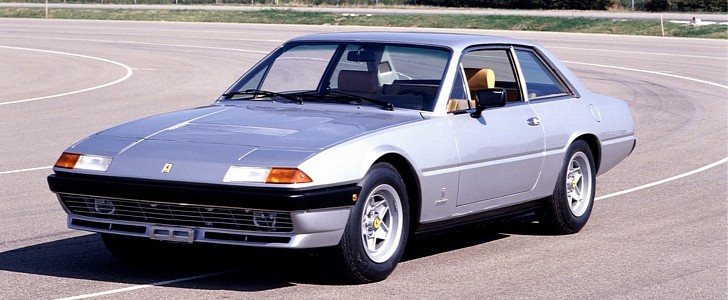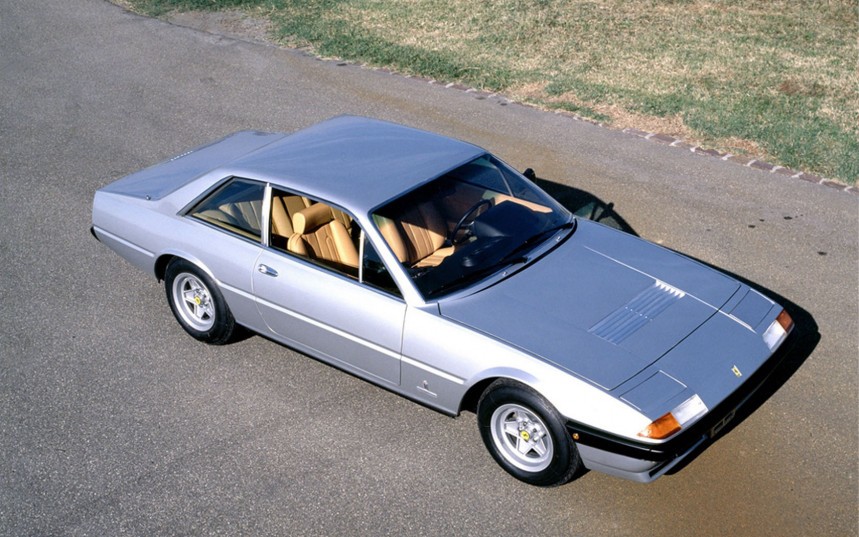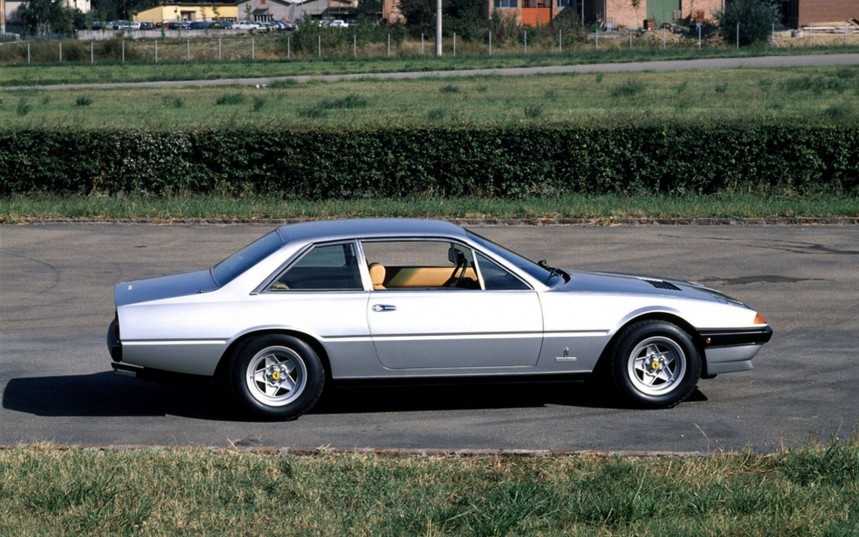Ferrari’s list of front-engined grand tourers currently includes the Portofino, Roma, 812 Superfast and 812 GTS, so it’s hard to believe that these beauties are descendants of the 400 Automatic, the carmaker’s first car to use an automatic gearbox. Though not the most eye-catching model, it has an interesting story, and it performs far better than it looks.
In 1976 Ferrari launched the flat-twelve 512 updated version of its Berlinetta Boxer, which was a relatively successful model that looked worthy of bearing the legendary name.
That same year, the 400 made its debut at the Paris Motor Show. The car was available as the 400 GT with a five-speed manual or as the 400 Automatic - the first Ferrari to use an automatic transmission.
It replaced the 365 GT4 2+2 which was produced for the previous four years, retaining the body and chassis designed by Ferrari’s regular styling collaborator, Pininfarina’s Leonardo Fioravanti.
The renowned designer employed the characteristic swage line dividing the body into upper and lower halves he first used for the 365 GTB/4 Daytona, but many fans felt it was not his best work.
The chassis was based on the GTC/4 and used the same tubular steel construction but had a longer 2,700-mm (106.3-in) wheelbase. The steel body panels were manufactured by Pininfarina in Turin and shipped fully finished to Ferrari’s Modena plant.
Ferrari saw the growing popularity of automatic transmission as an opportunity, and instead of developing their own unit, which would require time and cost a fortune, they decided to test the market using an existing transmission.
They opted for General Motor’s legendary THM400 3-speed unit which they sourced through worldwide supplier BorgWarner. The unit was first introduced in 1964 under the name "Turbo Hydra-Matic" in Cadillacs and "Super Turbine" in Buicks.
The aluminum and iron construction made it relatively heavy, but it was – and remains to this day - one of the most durable and reliable automatic gearboxes ever made.
It was an instant hit with Ferrari clients as the 400 Automatic outsold the manual GT, especially in Great Britain, where the vast majority of customers purchased the automatic model. The car was never officialy sold in the U.S. due to emerging environmental and safety regulations, but some used models were imported by fans who wanted to daily drive an automatic Ferrari.
The power was transmitted through a propeller shaft to a limited-slip differential, and from there, via half-shafts, it made its way to the wheels.
All that power, which at its peak translated into 340 PS (335 HP/250 kW) came from a good old fashion 4.8-liter (290-cu-in) V12 that reminded skeptics the 400 was a thoroughbred prancing horse.
Codenamed the F 101 C, it was an upgraded version of the 365 engine, sharing the 81-mm (3.2-in) bore but with the stroke increased to 78 mm (3 in). The powerplant was also fitted with six new 38 DCOE 110-111 Weber carburetors.
When it comes to the suspension, the Ferrari 400 featured an advanced suspension system for that era, with double wishbones, anti-roll bars on both axles, and a hydraulic self-leveling system on the rear.
Although many have called it the worst Ferrari of all time, the 400 Automatic has a certain appeal even today for people who are a bit more eccentric.
It was produced from 1976 to 1979 in 355 units, many of which have survived and can be found in used car dealerships or online. A 400 Automatic in good condition can be purchased for around $30,000-$40,000, making it the cheapest Ferrari V12 on the market.
That same year, the 400 made its debut at the Paris Motor Show. The car was available as the 400 GT with a five-speed manual or as the 400 Automatic - the first Ferrari to use an automatic transmission.
It replaced the 365 GT4 2+2 which was produced for the previous four years, retaining the body and chassis designed by Ferrari’s regular styling collaborator, Pininfarina’s Leonardo Fioravanti.
The renowned designer employed the characteristic swage line dividing the body into upper and lower halves he first used for the 365 GTB/4 Daytona, but many fans felt it was not his best work.
Ferrari saw the growing popularity of automatic transmission as an opportunity, and instead of developing their own unit, which would require time and cost a fortune, they decided to test the market using an existing transmission.
They opted for General Motor’s legendary THM400 3-speed unit which they sourced through worldwide supplier BorgWarner. The unit was first introduced in 1964 under the name "Turbo Hydra-Matic" in Cadillacs and "Super Turbine" in Buicks.
The aluminum and iron construction made it relatively heavy, but it was – and remains to this day - one of the most durable and reliable automatic gearboxes ever made.
It was an instant hit with Ferrari clients as the 400 Automatic outsold the manual GT, especially in Great Britain, where the vast majority of customers purchased the automatic model. The car was never officialy sold in the U.S. due to emerging environmental and safety regulations, but some used models were imported by fans who wanted to daily drive an automatic Ferrari.
All that power, which at its peak translated into 340 PS (335 HP/250 kW) came from a good old fashion 4.8-liter (290-cu-in) V12 that reminded skeptics the 400 was a thoroughbred prancing horse.
Codenamed the F 101 C, it was an upgraded version of the 365 engine, sharing the 81-mm (3.2-in) bore but with the stroke increased to 78 mm (3 in). The powerplant was also fitted with six new 38 DCOE 110-111 Weber carburetors.
When it comes to the suspension, the Ferrari 400 featured an advanced suspension system for that era, with double wishbones, anti-roll bars on both axles, and a hydraulic self-leveling system on the rear.
Although many have called it the worst Ferrari of all time, the 400 Automatic has a certain appeal even today for people who are a bit more eccentric.
It was produced from 1976 to 1979 in 355 units, many of which have survived and can be found in used car dealerships or online. A 400 Automatic in good condition can be purchased for around $30,000-$40,000, making it the cheapest Ferrari V12 on the market.








